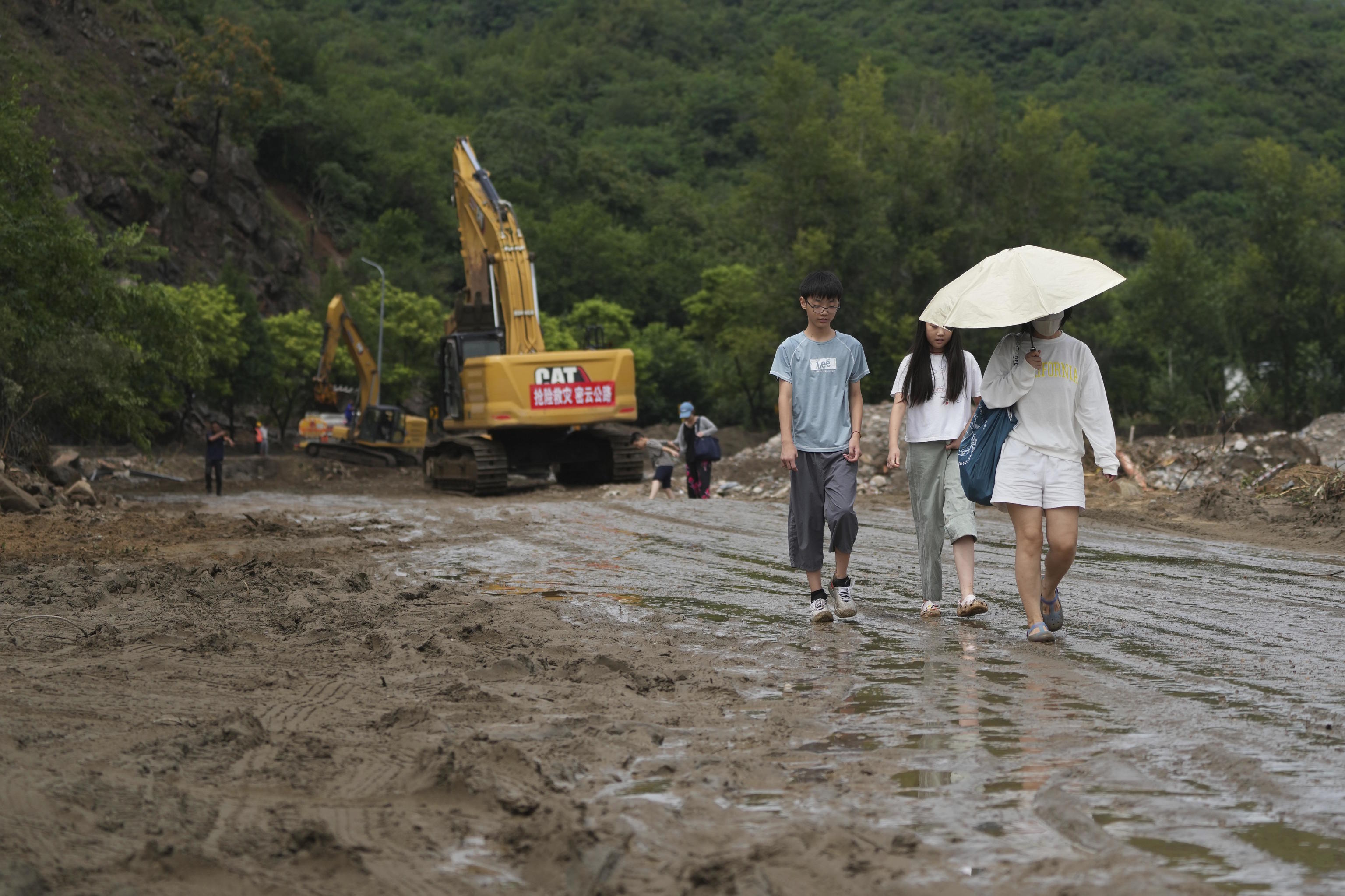Rescuers are rushing to relocate thousands of villagers from the villages in the mountainous district of Miyun, north of Beijing, to safe shelters such as schools, military compounds, and hospitals. The heavy rains have not let up in the last five days, causing deadly floods and landslides. Other suburbs of the capital are also experiencing the worst natural disaster to hit the political center of China in over a decade.
On Tuesday, authorities reported that the death toll from the recent floods in Beijing has risen to 33, including five rescuers, while nearly twenty people are missing.
Almost all the victims have been reported in Miyun. Vice Mayor Xia Linmao explained in a press conference that the storm has caused the collapse of 59,000 houses, while another 150,000 houses were damaged, along with roads and over a hundred bridges.
Record rains, which have been battering Beijing this July, intensified over the weekend, devastating densely populated areas on the outskirts of the city. Over 80,000 residents have been evacuated and Chinese President Xi Jinping has called for an increase in rescue operations to find the missing individuals.
The overflowing Miyun reservoir, the largest in the region where the Chaohe and Baihe rivers converge, had reached record levels today with 6,550 cubic meters, reaching its highest level since its construction in 1959. The Beijing floods are trending on Chinese social media, where dozens of videos circulate showing water sweeping away cars and toppling trees and light poles in many villages.
"There is an extremely high risk of flash floods, landslides, and mudslides in mountainous and rugged areas," reads a municipal warning in Beijing addressed to the entire city. All tourist attractions, from the Forbidden City to the Great Wall, have been closed. Power supply has been interrupted in some outlying districts. Around 130 villages are without electricity. State television images showed rescuers evacuating several elderly individuals from a residence, wading through chest-high water.
Other parts of China have also experienced severe floods resulting in numerous fatalities. In the province of Hebei, adjacent to Beijing, 15 people died and 22 are missing were reported on Monday. Further northeast, in the province of Jilin, 14 deaths were reported on Sunday.
Every year, especially during the summer typhoon season, there are reports of deadly floods in the world's second most populous country, home to over 1.1 billion people. However, experts argue that the impact of climate change is exacerbating extreme weather events, leading to increasingly frequent and deadly disasters.
The most destructive floods in recent memory in China occurred in 1998, claiming over 4,000 lives in the towns along the Yangtze River. Four years ago, another wave of record rains wreaked havoc, especially in the central province of Henan, resulting in over 300 deaths.
